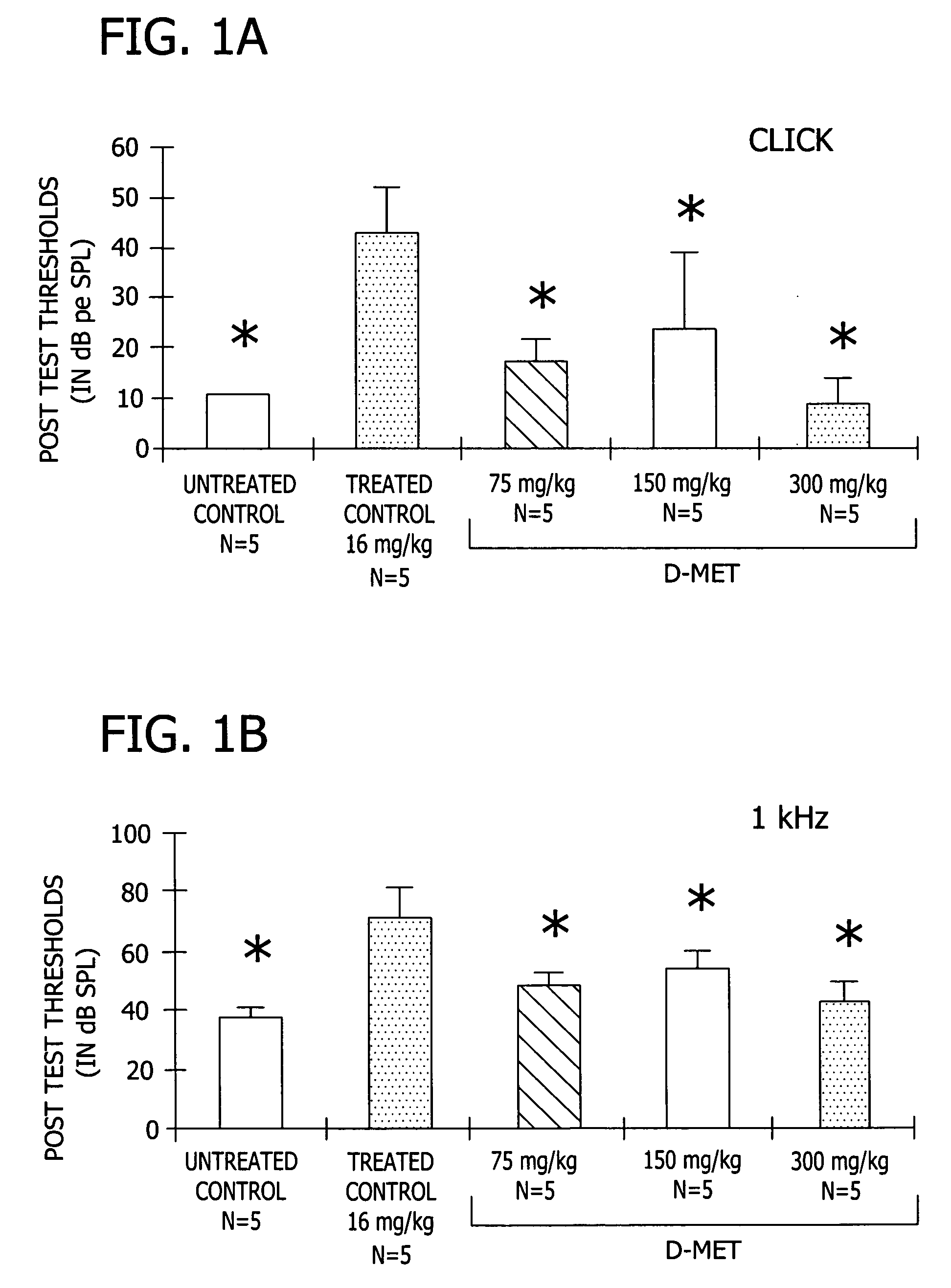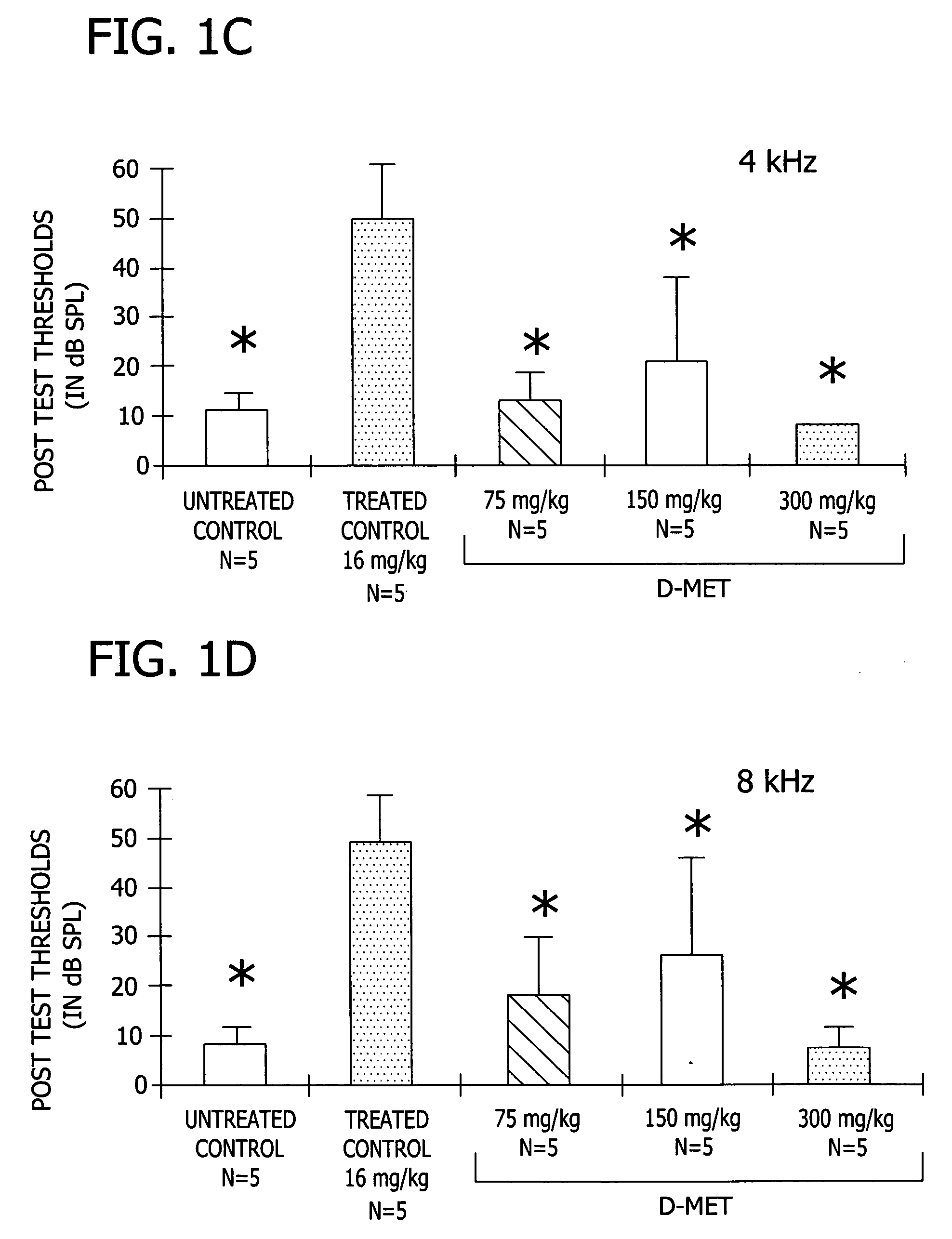Therapeutic use of D-methionine to reduce the toxicity of noise
a technology of d-methionine and noise, which is applied in the direction of antinoxious agents, drug compositions, peptide/protein ingredients, etc., can solve the problems of exacerbated cddp-induced weight loss and mortality, uncontrolled ototoxicity, and uncontrolled mechanisms, so as to prevent or reduce ototoxicity, and reduce survival
- Summary
- Abstract
- Description
- Claims
- Application Information
AI Technical Summary
Benefits of technology
Problems solved by technology
Method used
Image
Examples
example 1
Otoprotective Effect of D-Met
[0038] This experiment demonstrates the effectiveness of D-Met in preventing a variety of different toxic side effects associated with the use of platinum-containing anti-tumor compounds, exemplified by CDDP (cisplatin), in a mammal.
Materials and Methods
Animals
[0039] As is well known to those of ordinary skill in the art, the rat is a well-accepted experimental animal useful as a model for studies of CDDP toxicity in humans.
[0040] Complete data sets were obtained for five groups of five male Wistar rats (280-421 g). All animals were anesthetized with 1 ml / mg IM of Rompun cocktail (a solution containing 86.21 mg / ml ketamine and 2.76 mg / ml xylazine) prior to all injections and testing. Anesthesia was supplemented as needed with half doses throughout testing. The five groups included: a treated control group which received 16 mg / kg CDDP dissolved in normal sterile saline (1 mg of CDDP / ml normal saline; solution pH 6.3) administered by i.p. infusion wi...
PUM
| Property | Measurement | Unit |
|---|---|---|
| frequencies | aaaaa | aaaaa |
| hearing threshold | aaaaa | aaaaa |
| pH | aaaaa | aaaaa |
Abstract
Description
Claims
Application Information
 Login to View More
Login to View More - R&D
- Intellectual Property
- Life Sciences
- Materials
- Tech Scout
- Unparalleled Data Quality
- Higher Quality Content
- 60% Fewer Hallucinations
Browse by: Latest US Patents, China's latest patents, Technical Efficacy Thesaurus, Application Domain, Technology Topic, Popular Technical Reports.
© 2025 PatSnap. All rights reserved.Legal|Privacy policy|Modern Slavery Act Transparency Statement|Sitemap|About US| Contact US: help@patsnap.com



